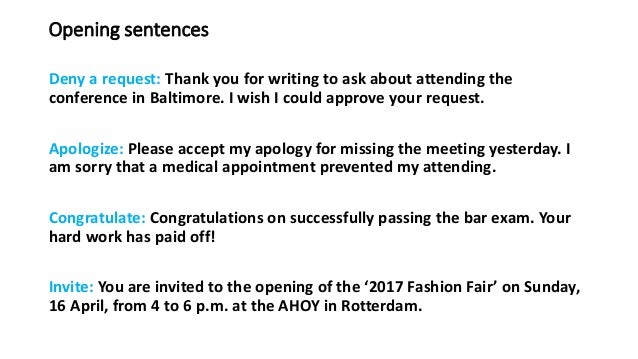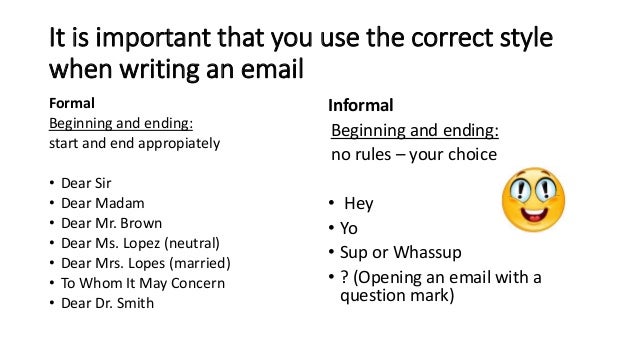Formal email beginning
Do you use a comma after a greeting? Formatting and Beginning the Email 1. Place the greeting on the first line. In formal letters, you can use a colon, but that is. It’s simple, friendly, and.
Use it when you’re. Under no circumstances would you reach out to a perfect stranger and say “Hey! Nowadays, the lines are more blurred. First, it says nothing.

Your opening sentence needs to say much more about you and the reason for. Well, we have your back. If your relationship with the. Opening line mentioning the last contact between you.

Avoid using abbreviations, contractions, slang, emoticons, and other informal terminology. You might do this in a variety of ways depending on your reason for writing and who you’re writing to.

After your greeting, it is optional to include a quick, positive note like “Hope all is well” or “Hope you had a terrific weekend. What a useless comment. Secon it’s weirdly formal. Examples of opening lines.
Avoid starting with the phrase ‘By way of introduction’ or ‘I’d like to introduce myself’. Top tip for opening. Punctuation, paragraph form, greetings, and sign-offs also vary from formal to informal communication.
Email greetings you should avoid are ones that could be construed as too casual, too formal. Emails are one of the most widely used forms of communication, taking over from older, slower methods of conveying messages like sending a fax or writing a letter. The subject line is what the reader sees in their inbox. Writing a Formal Email Subject Line.
If the subject line is misleading or missing. Add a Thank You line. This line is optional and mostly depends on the situation.
Keep away from abbreviations, contractions, slang, emoticons, and other informal terminology. Beginning the letter Most formal letters will start with ‘Dear’ before the name of the person that you are writing to: ‘Dear Ms Brown,’ or ‘Dear Brian Smith,’ You can choose to use first name and.
Greet the person you’re writing to. It may seem odd to address a stranger on the Internet as Dear, but it’s standard in formal correspondence. Other respectable but less commonplace options include Greetings and Salutations. When possible, it’s best to put the recipient’s name.
The way you start your letter depends on how formal you need to be. Here are some examples: 1. Familiarize yourself with common salutations to help you convey the right level of familiarity and respect in any professional situation.

Yorumlar
Yorum Gönder